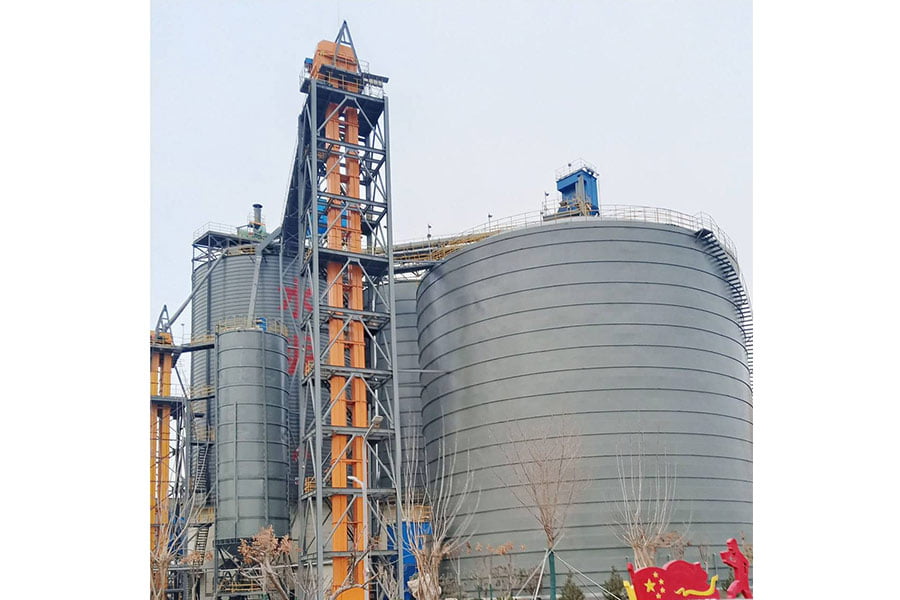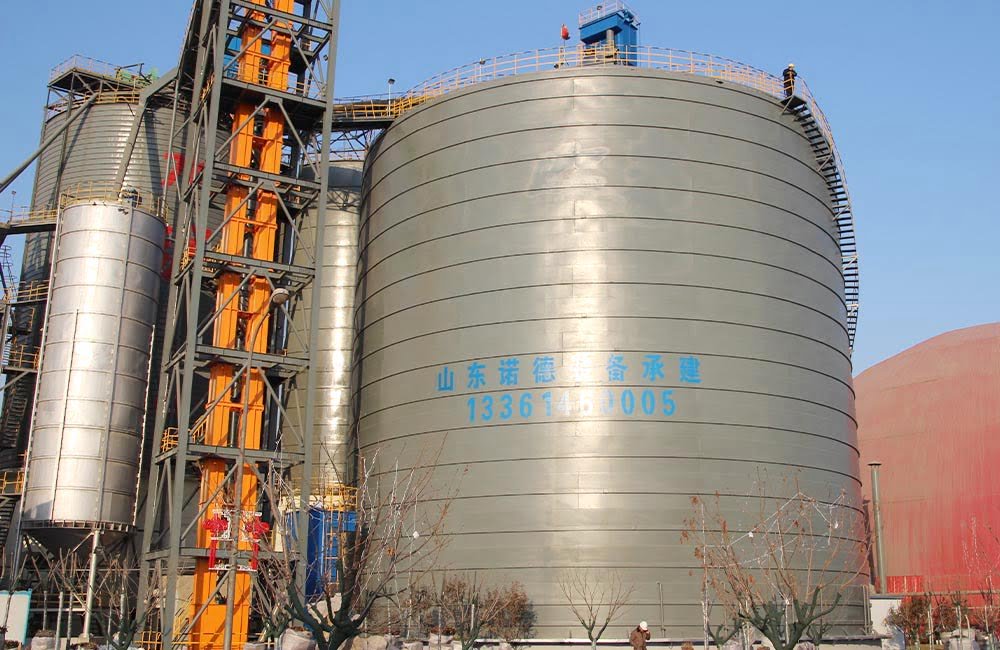Introducción
Grain storage is a crucial link in the agricultural supply chain. Safely storing harvested grains like wheat, corn, rice, etc. before transporting them to processing plants or livestock feed mills is essential. Silos play a vital role housing tons of grain efficiently while protecting the quality and freshness of the inventory.
Specifically, dedicated grain storage silo plants provide unique advantages over makeshift storage barns or warehouses. This article will explore what a silo plant is, its benefits, and how it enables grain farmers and distributors to optimize storage operations.
What is a Grain Silo Plant?

A grain silo plant refers to a specialized storage facility containing multiple large vertical silos for storing grain. The key characteristics include:
- Tower Silos – Cylindrical towers made of concrete or steel that minimize ground space needed. Their vertical design is structurally efficient for holding grains.
- Controlled Climate – Grain deteriorates rapidly if temperature and humidity fluctuate widely. Grain silos maintain consistent cool, dry conditions that better preserve quality over seasons.
- High Capacity – A single silo can hold thousands of metric tons of grain. Silo plants have multiple silos that can store entire harvests.
- Automation – Sophisticated equipment automates grain intake, transfer between silos, and loading into outbound trucks; minimizes manual labor.
Why Invest in a Dedicated Grain Silo Plant?

Constructing an on-site grain silo plant offers major advantages over makeshift grain warehouses:
Optimized Storage Conditions
- Consistent temperature/humidity monitoring and conditioning better preserves grain integrity over months of storage compared to basic warehouses without climate control systems. This retains nutritional value for animal feeds and germination viability for future planting.
Inventory Management Efficiency
- Automated grain handling and integrated sensors that continually track grain levels, temperature and humidity in each silo provide transparency into real-time inventory. This enables data-driven decisions to purchase, sell or transfer grains.
| Storage Type | Storage Conditions | Inventory Visibility |
|---|---|---|
| Silo Plant | Climate-controlled | Automated sensors enable real-time tracking |
| Warehouse | Minimal climate control | Manual inspections required |
Labor Cost Savings
- Automated conveying equipment transports grain between transport trucks, holding silos, drying/cleaning equipment and outbound trucks with minimal human intervention. This provides considerable labor cost savings.
Quality Safeguarding
- Sealed silos protect grains from contaminants, pests and excess moisture far more effectively than open-air warehouses. Grain quality deterioration is greatly reduced.
Improving Grain Handling Efficiency
Installing a high-capacity grain silo plant is a major first step – but optimizing grain handling operations also requires an efficient outbound logistics strategy. Below are key areas to address:
- Strategic Locations
- Position silo plants near major rail lines and highways to facilitate loading unit trains or trucks for cost-efficient grain transport to terminals and processing facilities.
- Loading/Unloading Optimization
- Install rapid-release doors, high-speed conveyors, and equipment for fast batch weighing to minimize loading/unloading times. Assign receiving/shipping lanes.
- Fleet Coordination
- Match truck/railcar capacity to load requirements to minimize overloading and unnecessary trips. Coordinate inbound deliveries & outbound shipments.
- Inventory Optimization
- Use grain inventory management software that blends data from automated silo sensors and inbound shipment notices. This supports data-driven decisions on buying, storing or selling grains based on market prices and demand forecasts.
| Focus Area | Action | Outcome |
|---|---|---|
| Strategic Locations | Position near major transport infrastructure | Lower transport costs |
| Loading/Unloading | Rapid doors, batch weighers, conveying throughput | Faster turnaround times |
| Fleet Coordination | Match transport capacity to loads | Prevent overloads, extra trips |
| Inventory Optimization | Inventory tracking software | Data-driven buy/sell decisions |
Leveraging Technology for Efficiency
In addition to automation, silo plants can leverage technologies like blockchain, predictive analytics, and drones to optimize operations:
- Use blockchain to digitize grain transactions – this establishes provenance and builds supply chain transparency.
- Aggregate sensor data and grain supply/demand data to build predictive models forecasting optimal inventory levels.
- Employ automated drones to perform external silo inspections, improving safety and reducing the need for dangerous manual inspections.
Conclusion & Future Outlook
Constructing a dedicated grain silo plant enables considerable storage optimizations over makeshift warehouses – from climate controlled conditions that better preserve grain quality to sensors and automation that create transparent, efficient inventory handling.
As technology continues advancing, we can expect even smarter silo plants that leverage AI, machine learning, and blockchain to further enhance grain storage capabilities and supply chain transparency. The future of grain warehousing is undoubtedly centered around purpose-built silo plants rather than general storage facilities. Operators who leverage such innovations will gain considerable market advantages.
Preguntas más frecuentes
Q: What types of grain are stored in silo facilities?
A: Corn, wheat, rice, soybeans and sorghum are among the most common grain types stored in silos. The facilities handle bulk volumes of these cereal grains.
Q: How does a silo plant monitor grain inventory?
A: Automated sensors track weight load levels, temperature and humidity in each silo on a continual basis. Software aggregates this sensor data to provide real-time visibility and reporting on total grain inventories down to the kilogram.
Q: What happens if a silo breaks down?
A: Sophisticated silo plants have redundancy designs that can reroute and handle the entire grain load with alternate silos or containment solutions in the event of malfunctions. Staff are also trained for emergency contingency procedures.
Q: How many silos are in a typical grain storage facility?
A: Most dedicated grain silo plants have between 3 to 8 storage silos within a single facility, with each tower silo able to hold several thousand metric tons of cereal grains depending on dimensions and grain type. Facilities may expand over time.




